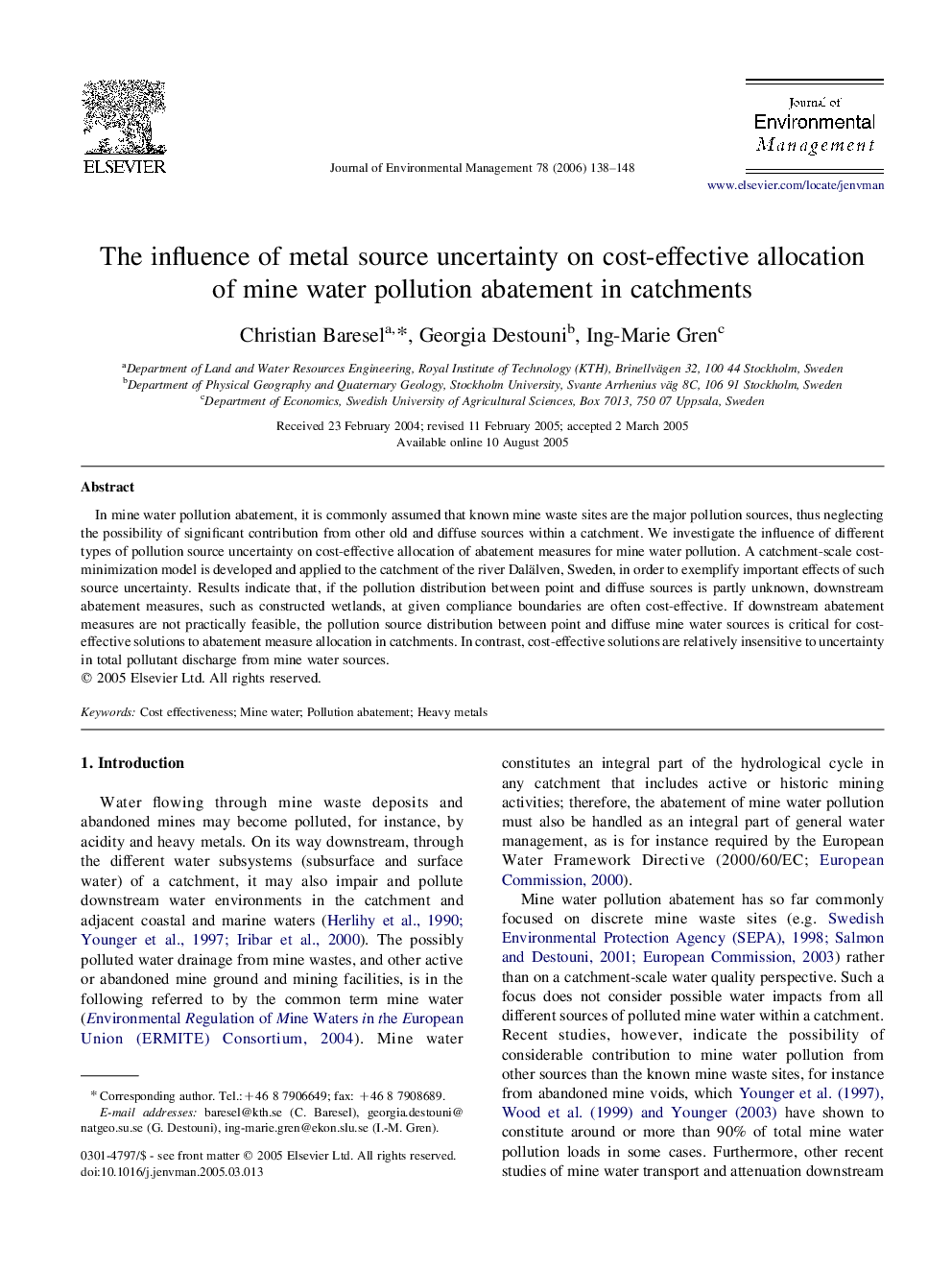| Article ID | Journal | Published Year | Pages | File Type |
|---|---|---|---|---|
| 1058521 | Journal of Environmental Management | 2006 | 11 Pages |
In mine water pollution abatement, it is commonly assumed that known mine waste sites are the major pollution sources, thus neglecting the possibility of significant contribution from other old and diffuse sources within a catchment. We investigate the influence of different types of pollution source uncertainty on cost-effective allocation of abatement measures for mine water pollution. A catchment-scale cost-minimization model is developed and applied to the catchment of the river Dalälven, Sweden, in order to exemplify important effects of such source uncertainty. Results indicate that, if the pollution distribution between point and diffuse sources is partly unknown, downstream abatement measures, such as constructed wetlands, at given compliance boundaries are often cost-effective. If downstream abatement measures are not practically feasible, the pollution source distribution between point and diffuse mine water sources is critical for cost-effective solutions to abatement measure allocation in catchments. In contrast, cost-effective solutions are relatively insensitive to uncertainty in total pollutant discharge from mine water sources.
